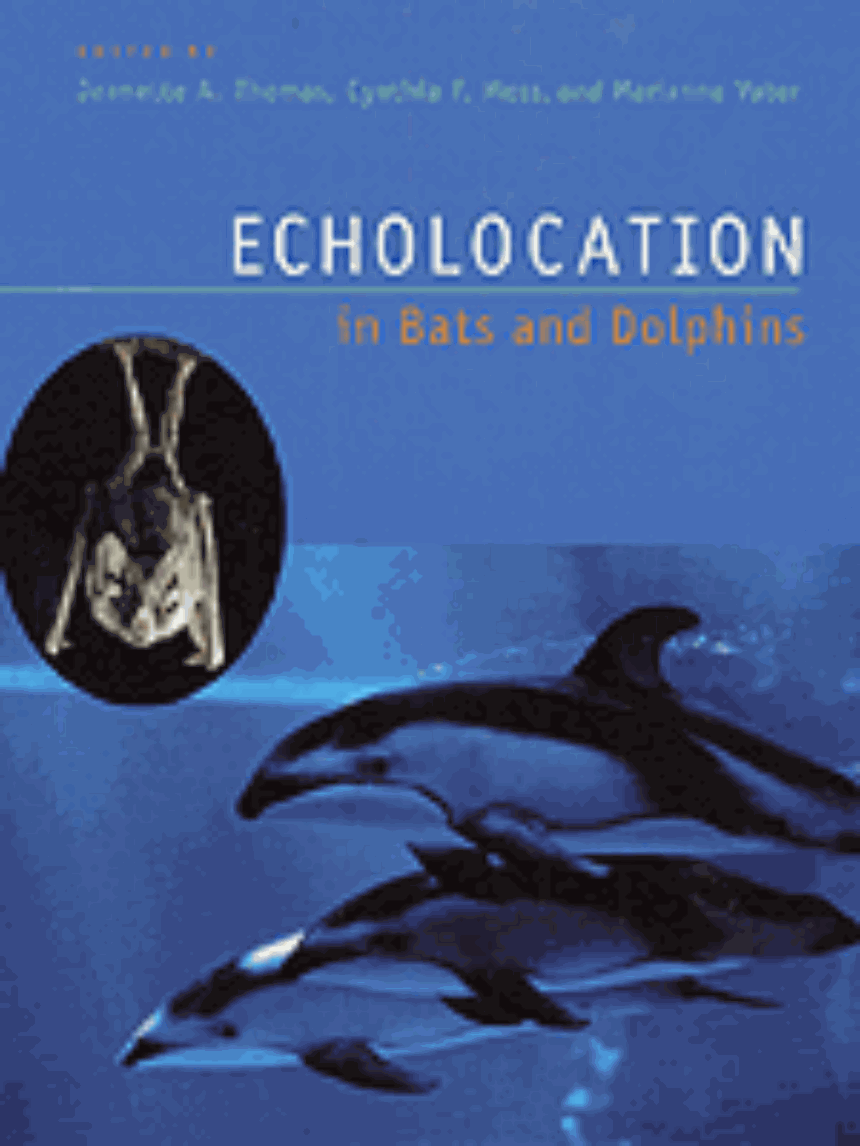Echolocation in Bats and Dolphins
Although bats and dolphins live in very different environments, are vastly different in size, and hunt different kinds of prey, both groups have evolved similar sonar systems, known as echolocation, to locate food and navigate the skies and seas. While much research has been conducted over the past thirty years on echolocation in bats and dolphins, this volume is the first to compare what is known about echolocation in each group, to point out what information is missing, and to identify future areas of research.
Echolocation in Bats and Dolphins consists of six sections: mechanisms of echolocation signal production; the anatomy and physiology of signal reception and interpretation; performance and cognition; ecological and evolutionary aspects of echolocation mammals; theoretical and methodological topics; and possible echolocation capabilities in other mammals, including shrews, seals, and baleen whales. Animal behaviorists, ecologists, physiologists, and both scientists and engineers who work in the field of bioacoustics will benefit from this book.
Echolocation in Bats and Dolphins consists of six sections: mechanisms of echolocation signal production; the anatomy and physiology of signal reception and interpretation; performance and cognition; ecological and evolutionary aspects of echolocation mammals; theoretical and methodological topics; and possible echolocation capabilities in other mammals, including shrews, seals, and baleen whales. Animal behaviorists, ecologists, physiologists, and both scientists and engineers who work in the field of bioacoustics will benefit from this book.
631 pages | 10 halftones, 285 line drawings, 15 tables | 8-1/2 x 11 | © 2003
Biological Sciences: Anatomy, Behavioral Biology, Ecology, Evolutionary Biology, Physiology, Biomechanics, and Morphology
Reviews
Table of Contents
Preface
Introduction | A Comparison of the Sonar Capabilities of Bats and Dolphins
Part One | ECHOLOCATION SIGNAL PRODUCTION, FEEDBACK, AND CONTROL SYSTEM
Part Two | AUDITORY SYSTEMS IN ECHOLOCATING MAMMALS
Part Three | PERFORMANCE AND COGNITION IN ECHOLOCATING MAMMALS
Part Four | ECOLOGICAL AND EVOLUTIONARY ASPECTS OF ECHOLOCATING MAMMALS
Part Five | ECHOLOCATION THEORY, ANALYSIS TECHNIQUES, AND APPLICTIONS
Part Six | POSSIBLE ECHOLOCATION ABILITIES IN OTHER MAMMALS
Author Index
Sunject Index
Introduction | A Comparison of the Sonar Capabilities of Bats and Dolphins
Part One | ECHOLOCATION SIGNAL PRODUCTION, FEEDBACK, AND CONTROL SYSTEM
Part Two | AUDITORY SYSTEMS IN ECHOLOCATING MAMMALS
Part Three | PERFORMANCE AND COGNITION IN ECHOLOCATING MAMMALS
Part Four | ECOLOGICAL AND EVOLUTIONARY ASPECTS OF ECHOLOCATING MAMMALS
Part Five | ECHOLOCATION THEORY, ANALYSIS TECHNIQUES, AND APPLICTIONS
Part Six | POSSIBLE ECHOLOCATION ABILITIES IN OTHER MAMMALS
Author Index
Sunject Index
